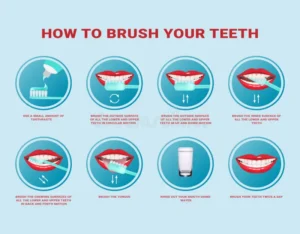Upper East Side Orthodontics
Contact
Hours
- Monday: 9:00am – 9:00pm
- Tuesday: 9:00am – 6:00pm
- Wednesday: 9:00am – 9:00pm
- Thursday: 9:00am – 9:00pm
- Friday: 9:00am – 5:00pm
Upper East Side Orthodontics, located in the vibrant city of New York, New York, is dedicated to providing top-quality orthodontic care in a welcoming and comfortable environment. Led by a team of experienced orthodontists, our practice combines advanced technology with personalized treatment plans to help patients achieve the smiles they’ve always dreamed of. Whether you’re considering traditional braces or clear aligners, Upper East Side Orthodontics offers a comprehensive range of orthodontic services tailored to your unique needs.
Orthodontic Services
Traditional Braces
- Metal Braces: Time-tested orthodontic solution for correcting misaligned teeth and bite issues.
- Ceramic Braces: Clear or tooth-colored brackets for a more discreet orthodontic treatment option.
Clear Aligner Therapy
- Invisalign: Removable clear aligners for a virtually invisible way to straighten teeth without traditional braces.
- ClearCorrect: Transparent aligners that gradually shift teeth into alignment for a more aesthetically pleasing smile.
Comprehensive Orthodontic Care
Initial Consultation
- Orthodontic Evaluation: Thorough assessment to determine the most suitable treatment plan for your individual orthodontic needs.
- Customized Treatment Plan: Tailored orthodontic approach designed to achieve optimal results while considering your lifestyle and preferences.
Orthodontic Treatment
- Braces Adjustment: Regular visits to ensure braces or aligners are properly adjusted for consistent progress and comfort.
- Interceptive Orthodontics: Early intervention to address orthodontic issues in children and guide proper jaw and tooth development.
Patient Experience
Comfortable Environment
- Modern Facility: State-of-the-art office equipped with the latest orthodontic technology for efficient and effective treatment.
- Relaxing Atmosphere: Comfortable and inviting environment to help patients feel at ease during their orthodontic appointments.
Personalized Care
- Individualized Attention: Dedicated orthodontic team committed to providing personalized care and addressing your specific concerns throughout your treatment journey.
- Open Communication: Transparent communication about your treatment plan, progress, and any adjustments needed to ensure the best possible outcome.
Bone Grafting
Bone grafting is a surgical procedure used to augment or replace bone that has been lost or damaged due to trauma, disease, or other factors. It is commonly performed in dentistry, orthopedics, and reconstructive surgery to regenerate bone tissue and promote healing in areas where bone deficiency or defects are present. In dentistry, bone grafting is often used to enhance the stability and support of dental implants, treat periodontal disease, or repair defects in the jawbone. Here's an overview of bone grafting and its applications in dentistry:
- Purpose of Bone Grafting:
- Bone grafting is performed to stimulate bone growth, fill in bone defects or voids, and provide structural support in areas where bone volume or density is insufficient. The procedure helps restore the natural architecture and function of the bone, creating a suitable foundation for dental implants, prosthetics, or other dental restorations.
- Types of Bone Grafts:
- There are several types of bone grafts used in dentistry, including:
- Autogenous Grafts: Autogenous bone grafts, also known as autografts, involve harvesting bone tissue from the patient's own body, typically from the jaw, hip, or tibia. Autografts are considered the gold standard for bone grafting procedures because they offer excellent biocompatibility, osteogenic potential, and minimal risk of immune rejection.
- Allogeneic Grafts: Allogeneic bone grafts are derived from human cadaveric donors and processed to remove cellular components while preserving the bone's structural integrity. These grafts are readily available and eliminate the need for additional surgical sites, but they carry a slight risk of disease transmission and may require additional processing to ensure compatibility.
- Xenogeneic Grafts: Xenogeneic bone grafts are sourced from non-human animal donors, such as bovine (cow) or porcine (pig) sources. These grafts are treated to remove antigenic materials and sterilized to reduce the risk of immune rejection and disease transmission. Xenogeneic grafts provide an alternative option for patients who cannot undergo autogenous grafting or prefer non-human-derived materials.
- Synthetic Grafts: Synthetic bone grafts are composed of biocompatible materials, such as calcium phosphate ceramics or bioactive glass, designed to mimic the properties of natural bone and promote new bone formation. Synthetic grafts offer the advantage of predictable resorption rates, unlimited availability, and reduced risk of disease transmission, but they may not possess the same osteogenic potential as natural bone grafts.
- Indications for Bone Grafting:
- Bone grafting may be indicated in various dental procedures, including:
- Dental Implant Placement: Bone grafting is often performed prior to or during dental implant surgery to augment the jawbone and provide adequate support for implant placement. Grafting may be necessary in cases of bone resorption, inadequate bone volume, or anatomical defects that compromise implant stability and longevity.
- Ridge Augmentation: Ridge augmentation procedures involve adding bone graft material to the alveolar ridge (jawbone) to correct deficiencies in bone volume, width, or height. These procedures are commonly performed to enhance the aesthetics and function of the jawbone in preparation for dental implant placement or prosthetic rehabilitation.
- Socket Preservation: Socket preservation is a preventive bone grafting procedure performed immediately following tooth extraction to preserve the natural bone structure and prevent bone loss or resorption. Grafting materials are placed within the extraction socket to fill the void and maintain the surrounding bone volume, facilitating future implant placement or prosthetic restoration.
- Bone Grafting Procedure:
- The bone grafting procedure typically involves several steps, including:
- Preoperative Evaluation: The patient undergoes a thorough clinical and radiographic examination to assess the extent of bone loss or defects and determine the most appropriate treatment plan.
- Graft Material Selection: The dentist selects the most suitable graft material based on the patient's needs, anatomical considerations, and treatment goals.
- Graft Placement: The graft material is placed into the desired site using surgical techniques, such as guided bone regeneration (GBR), bone expansion, or sinus lift procedures. The graft is secured in place and covered with a protective membrane or barrier to promote healing and prevent soft tissue invasion.
- Healing and Integration: Over time, the graft material integrates with the surrounding bone tissue through a process called osseointegration, forming a stable, functional bone matrix. The patient undergoes regular follow-up visits to monitor healing progress and assess treatment outcomes.
- Postoperative Care and Recovery:
- Following bone grafting surgery, patients are provided with postoperative instructions and guidelines to promote healing and minimize complications. This may include:
- Pain Management: Patients may experience mild discomfort or swelling after surgery, which can be managed with over-the-counter pain medications and cold compresses.
- Oral Hygiene: Patients are instructed to maintain good oral hygiene practices, including gentle brushing and flossing, to keep the surgical site clean and free of debris.
- Dietary Restrictions: Patients may be advised to follow a soft diet and avoid hard, crunchy, or spicy foods that could irritate the surgical site or disrupt healing.
- Activity Modification: Patients should avoid strenuous physical activities, smoking, and excessive alcohol consumption during the initial healing period to promote optimal recovery and minimize complications.
- Long-Term Outcomes:
- The success of bone grafting procedures depends on various factors, including the quality and quantity of bone graft material, the patient's overall health, and adherence to postoperative care instructions. With proper treatment and follow-up, bone grafting can significantly improve bone volume and density, enhance oral function, and facilitate the success of subsequent dental procedures, such as dental implant placement or prosthetic rehabilitation.
In summary, bone grafting is a valuable surgical technique used in dentistry to restore bone volume, support
Oral Hygiene Instruction
Oral hygiene instruction is an essential aspect of preventive dental care aimed at educating patients about proper oral hygiene practices to maintain optimal oral health and prevent dental problems. Here are some key components of oral hygiene instruction provided by dental professionals:
- Brushing Technique:
- Proper brushing technique is crucial for removing plaque, bacteria, and food particles from the teeth and gums. Patients should be instructed to:
- Use a soft-bristled toothbrush and fluoride toothpaste.
- Hold the toothbrush at a 45-degree angle to the gums.
- Brush gently in small circular motions, covering all surfaces of the teeth and gums.
- Brush for at least two minutes, twice a day, preferably in the morning and before bedtime.
- Flossing Technique:
- Flossing helps remove plaque and debris from areas between the teeth and along the gumline where a toothbrush cannot reach. Patients should be instructed to:
- Use a piece of dental floss about 18 inches long.
- Wrap the floss around the middle fingers of each hand, leaving a few inches of floss between them.
- Gently slide the floss between the teeth, curving it around each tooth in a C-shape and moving it up and down to clean the sides of the teeth and under the gumline.
- Use a clean section of floss for each tooth to avoid spreading bacteria.
- Interdental Cleaning Devices:
- Patients with spaces between their teeth or dental appliances may benefit from using interdental cleaning devices such as interdental brushes, dental picks, or water flossers to supplement their oral hygiene routine.
- Tongue Cleaning:
- Cleaning the tongue helps remove bacteria and food debris that can contribute to bad breath and oral health problems. Patients can use a tongue scraper or their toothbrush to gently clean the surface of the tongue from back to front.
- Mouthwash Use:
- Mouthwash can help reduce plaque, gingivitis, and bad breath when used as part of a comprehensive oral hygiene regimen. Patients should be advised to choose an alcohol-free mouthwash and use it according to the manufacturer's instructions.
- Healthy Diet and Lifestyle Habits:
- Educate patients about the importance of a balanced diet rich in fruits, vegetables, lean proteins, and whole grains for overall health and oral health. Encourage them to limit sugary snacks and beverages and avoid tobacco use, which can increase the risk of oral health problems.
- Regular Dental Check-Ups:
- Stress the importance of scheduling regular dental check-ups and professional cleanings every six months to detect and prevent dental problems early and maintain optimal oral health.
By providing comprehensive oral hygiene instruction tailored to each patient's needs, dental professionals can empower patients to take an active role in caring for their oral health and promote lifelong habits that support healthy teeth and gums.





